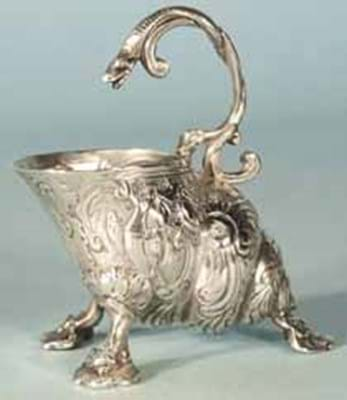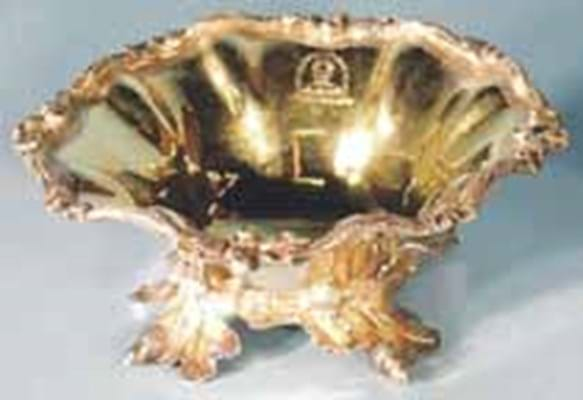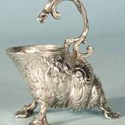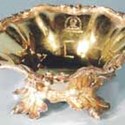At Halls' (15% buyer's premium) April 28 sale of pictures, jewellery and silver, buyers were found for 81 per cent of the 551 entries, with some of the most consistent bidding seen for the 173 silver lots. Two large consignments comprised over a third of this section that - although lacking the cabinet collecting novelties that the market now embraces - was estimated at sensible levels that put little pressure upon a heavily-stocked silver trade.
A set of four George III candlesticks by Smith, Tate & Co., 1814, was the best-seller. The Sheffield-made sticks, 12 1/2in (32cm) high, had loaded bases, but with acanthus and anthemion embossed decoration to fluted stems, they were in the neoclassical taste that today has more admirers than English 'fussy' rococo. Estimated at £2000-3000, they sold to a private buyer against the trade at £3400.
From the same source, a fine quality set of eight silver bowls by Benjamin Smith III, London, 1845, weighing in at 66oz, fetched £2600. Each measured approximately 5 1/4in (14cm) across and was raised on four finely cast feet of scrolling oak leaves and acorns.
Consigned from Bridgenorth were three pairs of shaped oval, gadrooned and crested, meat dishes, all marked for Frederick Kandler, London 1765. They were offered in three lots. The largest pair, 17 3/4in (45cm) across and weighing 110oz, sold at £2000, the same price as an ensuite pair measuring 16in (41cm) weighing 78oz, while the smallest pair 13 3/4in (35cm) across and 55oz sold at £1400.
The same maker's name was also seen on a matching oval warming stand and burner, London 1771 that, embellished with acanthus and gadrooning, weighed approximately 40oz. It made £750, the same price as a pair of Charles II trefid spoons with rat tail bowls and indistinct maker's marks for London 1684. Another early spoon, an Elizabethan seal top with a maker's mark C enclosing M (possibly Martin Cottrel) sold at £620.
Two more enigmatic hollowares performed well against modest hopes.
Sold at £1050 (estimate £200-300) was a conch shell cream jug, 4in (10cm) high, embossed with flowers, birds and scrolls and applied with three lion mask feet and a scroll handle entwined with a serpent. It was marked obliquely to the spout either PC or PG and its rocaille style suggested a date of around 1730-50.
A 'Victorian' silver-gilt goblet initially thought to be an exercise in mid-19th century historicism pushed on to £2500 (estimate £300-500) amidst suspicion that it was 17th century German. Measuring 10 1/2in (26cm) high and weighing 13oz this was profusely chased with flowers and three oval vignettes of mythological creatures and monuments and was inscribed to the neck Henry Arthur Cholmondeley from his godfather, Watkin Williams Wynn, 1857.
Marked for Craddock and Reid, London 1814, a set of six salts each with three scroll feet, foliate engraved strapwork and gadrooned and scroll moulded rims, sold at £800.
Christina Trevanion, jewellery specialist at the Welsh Bridge Salerooms for 18 months, noted an increased interest in unusual and coloured stones, but it was a single stone diamond ring that sparkled most. With an old cut stone of around 1.5ct, it sold at £2600.
Estimating the silver trade
DESPITE the well-documented vagaries of the silver and electroplate market, if vendors can forget the price history of the previous two decades it is still possible to hold a successful sale of country house tablewares.








